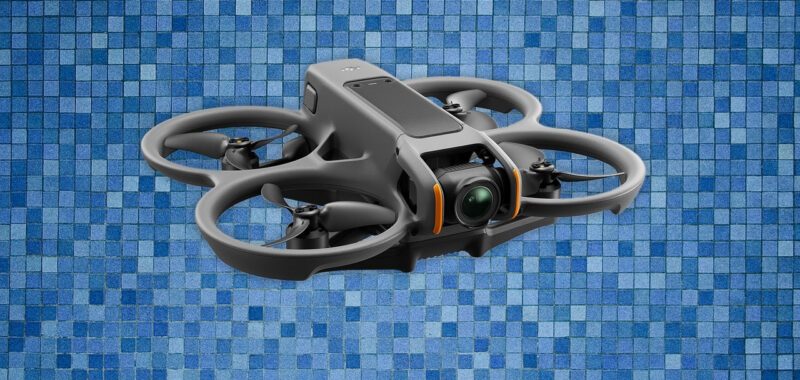If I need to stop suddenly, I can tap the brake button and it’ll bring the drone back to a safe hover. That doesn’t mean it’s impossible to crash, and I managed to bring the drone down once by steering it directly into the post of the aforementioned fence. It dropped about 8 feet onto the stones of a beach, but was fine to resume flying, without a visible mark on it. This thing is impeccably built, and while I don’t doubt repeated high-speed crashes will damage it eventually, it’s clearly designed to withstand some punishment.
But what of those mind-bending aerial stunts on YouTube? Sadly, you can’t really pull them off with the motion controller. The drawback to its user-friendly simplicity is that it doesn’t work in the same way as a twin-stick controller. Think of it as a controller with training wheels. If you stop flying—to dive for instance—it will eventually stop moving and hover in place. Clever, but limiting.
For those that want to graduate to trickier manual flight, DJI sells the $199 console-style Remote Controller 3, which allows you to fly the drone in manual mode. Here, the training wheels are off and the slightest error can result in an embarrassing and potentially costly crash. You can also perform incredible tricks, if you know how.
For me, who’s keen to return the Avata 2 sample back to DJI in one piece, the RC Motion 3 feels like enough for now. It’s allowed me to capture some wonderful footage using the Avata 2’s electronically stabilized camera, which records video at 4K/60 fps or 2.7K/120 fps. There’s also the option to use a 10-bit D Log M color profile for more postproduction color grading too. The drone comes with 46 GB of built-in storage for videos and 12 MP photos, plus a microSD slot for those requiring more space.
My First FPV
Ultimately, the Avata 2 is the latest in a long line of DJI drones that makes it easy for amateurs to achieve great results. In this case, it makes FPV flying incredibly simple and intuitive, and its camera allows you to create some thrilling, smoothly cinematic sequences with very little effort.
There’s also very little in the way of comparable products on the market, with most FPV drones being kits built by enthusiasts, rather than consumer-friendly designs. As a result, the main alternative to the Avata 2 is the original DJI Avata. And for those who own the first-generation model, I’d say, aside from the Goggles 3, which aren’t retro-compatible, the improvements here don’t really warrant an upgrade.
Photograph: DJI
But if you’re new to the FPV game, I strongly advise you to choose the latest version. It is only $179 more, but there are improvements across the board, with enhanced flight performance, longer flight time, intelligent flight modes, and advanced safety features. If you’re looking for a gateway to FPV fun, they don’t come any more accessible than the Avata 2.


